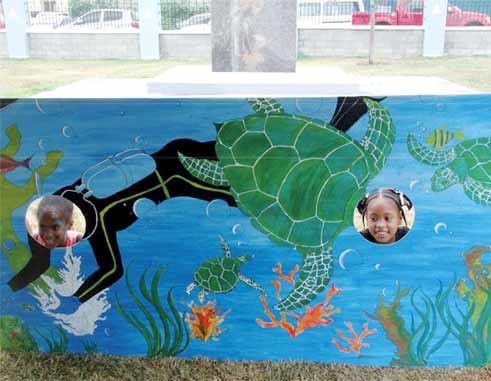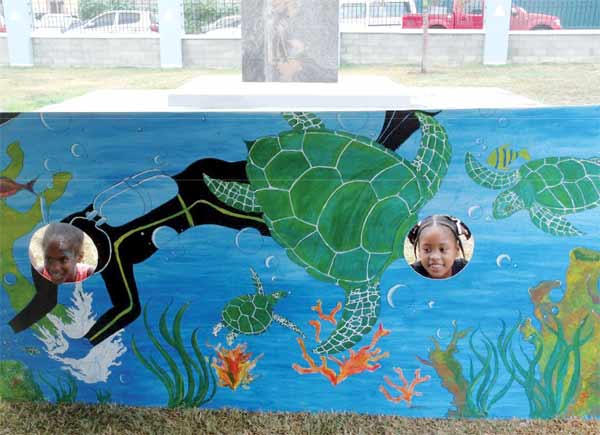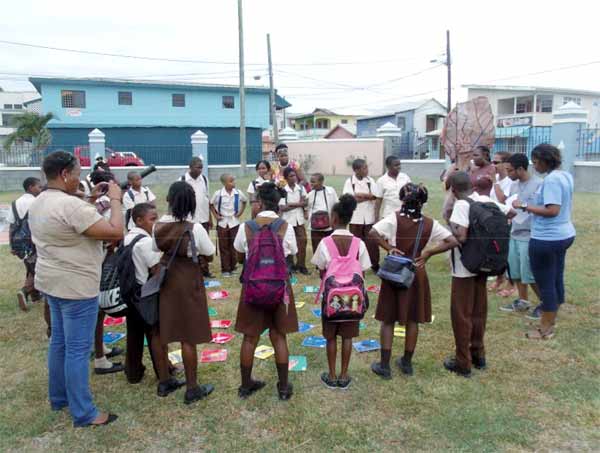“This is Who We Are” Campaign.
DURING the months of July through to October the Saint Lucia National Trust and the Department of Fisheries, in collaboration with PCI Media Impact, and with support of The Nature Conservancy through its ECMMAN (Eastern Caribbean Marine Managed Areas Network) Project will be running a campaign to promote the conservation and management of marine areas.
The campaign is centred on the understanding that marine natural resources are important to the lives of a wide range of persons and so must be conserved.
The marine environment consists of unique flora and fauna and geological structures that enable coastal areas to carry out a number of important functions. Coastal areas have coral reefs that help to protect beaches, sand dunes, mangroves and river mouths. The coral reefs help sustain fish populations by acting as nurseries for juvenile fish and other marine species such as eels, squids, lobsters, crabs, sea sponges, and marine turtles. As such, coral reefs are important structures to help sustain both inshore and pelagic fisheries, and are thus important to fishers, whether engaged in recreational or commercial fishing.
Coral reefs are comprised of organisms that contain large amounts of calcium, (mainly in the form of calcium carbonate), in their bodies. When these organisms die, their shells and exo-skeletons break down and the calcium carbonate that is released forms fine sand particles that contribute significantly to the production of sandy beaches. This therefore makes coral reefs important to the development and maintenance of many of Saint Lucia’s beaches. The many colonies of polyps (soft bodied organisms that occur either as individuals or in colonies on coral reefs), on the reef serve as a filter, removing unwanted sediment and nutrients; whilst the wide variety of brightly coloured fish and corals make the reef a spectacular sight to visitors. The hard structure of the coral reefs also helps to serve as a barrier against strong or high energy waves that can be very destructive to the coast.
Our marine environment can thus provide us with clear blue seas and rocky cliffs that protect the land. The environment also provides us with a wide variety of fish, sea grasses that feed many species, sand dunes that protect structures inland and support marine vegetation, and mangroves and river mouths, that are home to many birds, reptiles, amphibians and of course mammals and fish. Mangroves are important sites that trap sediment, preventing seepage to the sea. Their network of prop roots in saline water also helps to build new land and serve as breeding grounds for many species.
The small size of many islands means that there is significantly more coastline per unit area compared to that of continents. The warmth of the ocean waters coupled with the relatively easy access from the land makes small islands ideal for tourism as they attract many visitors who wish to spend their vacation relaxing along cool shorelines, swimming in blue, warm waters and sunbathing on sandy beaches.
Where incomes are limited, coastlines also represent important, affordable, and popular areas of enjoyment for a wide cross section of the population. Irrespective of income, communities can enjoy picnics on the beach, surfing, diving, snorkeling, fishing and observing sunsets and/or sunrises. Increased livelihood opportunities can be realized as more persons engage in recreational activities on our beaches and more visitors come to our shores. Finally, relaxation on the beach is often prescribed to persons who are overworked and under severe stress. What a wonderfully affordable form of therapy!
The campaign, “This is who we are” strives to remind all Saint Lucians that the marine environment plays an important role in determining our livelihoods, culture and wellbeing. The coastal area positively influences the lives of fisherfolk, sea moss farmers, agriculturists, charcoal producers, tour operators, hoteliers, chefs, beach vendors, taximen, bus drivers, coastal zone managers fisheries biologists, students, and so many others. Marine areas also affect access to recreation by many islanders, and so contribute to public mental and social wellbeing. Whether we are farmers, doctors, lawyers, business persons, teachers and/or clergymen, young, old or ageless, the presence of beaches impacts on our levels of enjoyment of life and our interactions with our natural environment.
The marine environment truly affects who we are, from both an economic and social point of view. The marine ecosystem feeds, nurtures, strengthens and unites us and can also help us laugh in times of difficulty and to build alliances when cultures and economies differ.
Subsequently, it is only logical that we conserve and sustainably use all our marine resources, thus helping to safeguard all our futures.
For more information contact Mr. Craig Henry of the Saint Lucia National Trust at email southofficer@slunatrust.org or telephone 454-5014 on behalf of the “This is Who We Are Campaign” Team. Participating organizations include the Saint Lucia National Trust, The Department of Fisheries, The Eastern Caribbean Marine Managed Areas Project (ECMMAN), The Nature Conservancy (TNC) and the German Federal Ministry for the Environment, Nature Conservation, Building and Nuclear Safety (BMUB).














